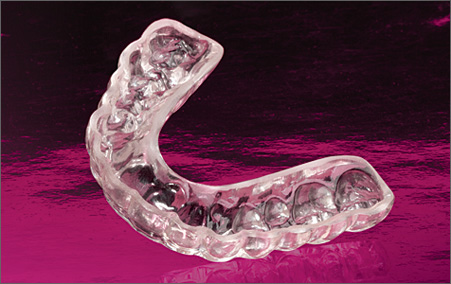Gnashing of teeth caused by stress
More and more people gnashing by teeth at night. This can damage the teeth and lead to various health problems. Frequently the gnashing of teeth is caused by stress.
Many people take the stresses of the day with them to sleep. A frequent consequence is bruxism. Sufferers downright bite “teeth”. Other, but rare causes of teeth grinding may be misalignments of the teeth or jaw, ill-fitting dentures or protruding tooth fillings. Approximately ten percent of Americans grind their teeth. The report by the Statistical Yearbook of the American Dental Association for 2011. Particularly frequently occurs gnashing of teeth in the age group of 35- to 45-year old. Women are more often affected than men. However, many children and young people grind their teeth also.
By the gnashing of teeth threaten diverse damage. At the abrasions teeth lose substance. The tooth can be sanded in this way up to the root. Through the extreme pressure occur cracks in the enamel, which can lead to hypersensitive teeth. Even the tooth socket is affected by the massive friction, and the gums can retire in the future. Then it comes to bacterial inflammation, the teeth loosen and can even fall out. Another consequence of the gnashing of teeth are pain in the face and jaw due to the strong strain of the muscles of mastication. Even neck and neck muscles can tense up by the gnashing of teeth, therefore often arise headache.
Relaxation exercises help to avoid teeth grinding.
In severe cases it can lead to TMJ Lock. The mouth can be hardly opened. The gnashing of teeth should therefore be counteracted in time. Remedy, for example, a bite splint – also known as “teething rail” – create, which also carries the patient during sleep and when needed during the day. The rail is adjusted by the dentist and is supported on either the upper or the lower jaw. By splint the teeth can effectively protect against the emery forces. In addition, it is by a change in question to a relaxation of the hinge region. Patients who wear a splint at night, often have fewer headaches in the morning and tensions. However, the track does not show success in each patient.
But other measures are also possible, such as stress coping training and relaxation exercises. A good therapeutic option is the combination of massage and relaxation exercises with biofeedback. The latter can help patients to think consciously remember not to press the upper and lower jaws to each other. It is stated the gnashing of teeth – known in technical jargon “bruxism” – mostly by the dentist who can see the drag marks on the teeth. However, this is possible only relatively late, when damage already occurred. Morning tension and pain in the face, and especially in the jaw can be a first indication of bruxism. Often it is the partner who noticed it first, because he hears the crunching noises in the night.